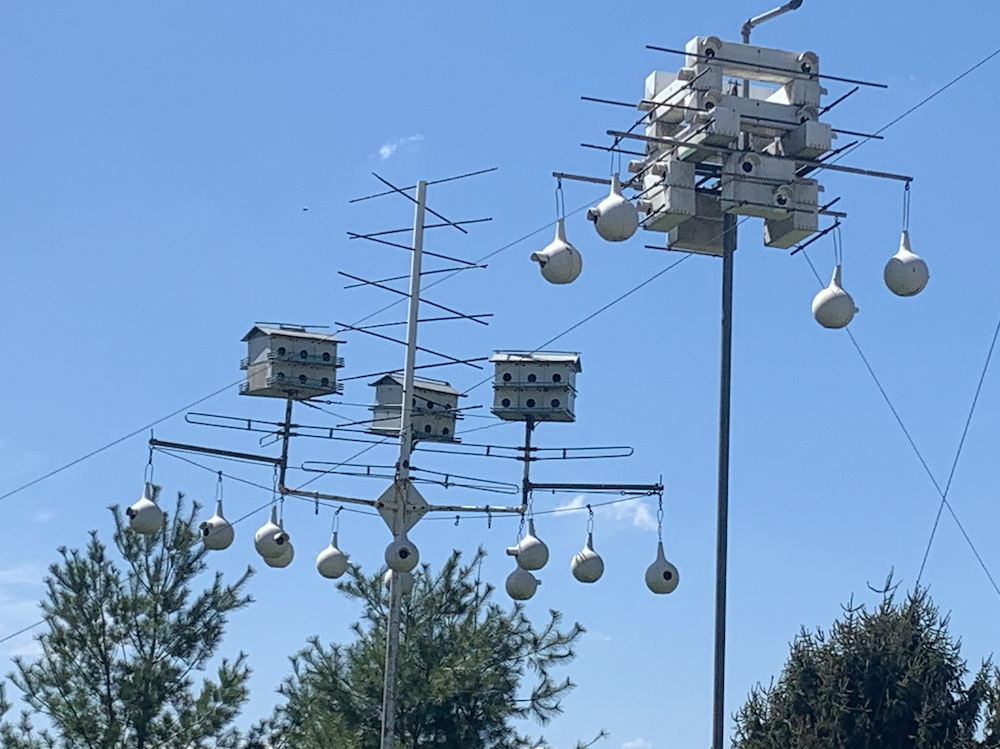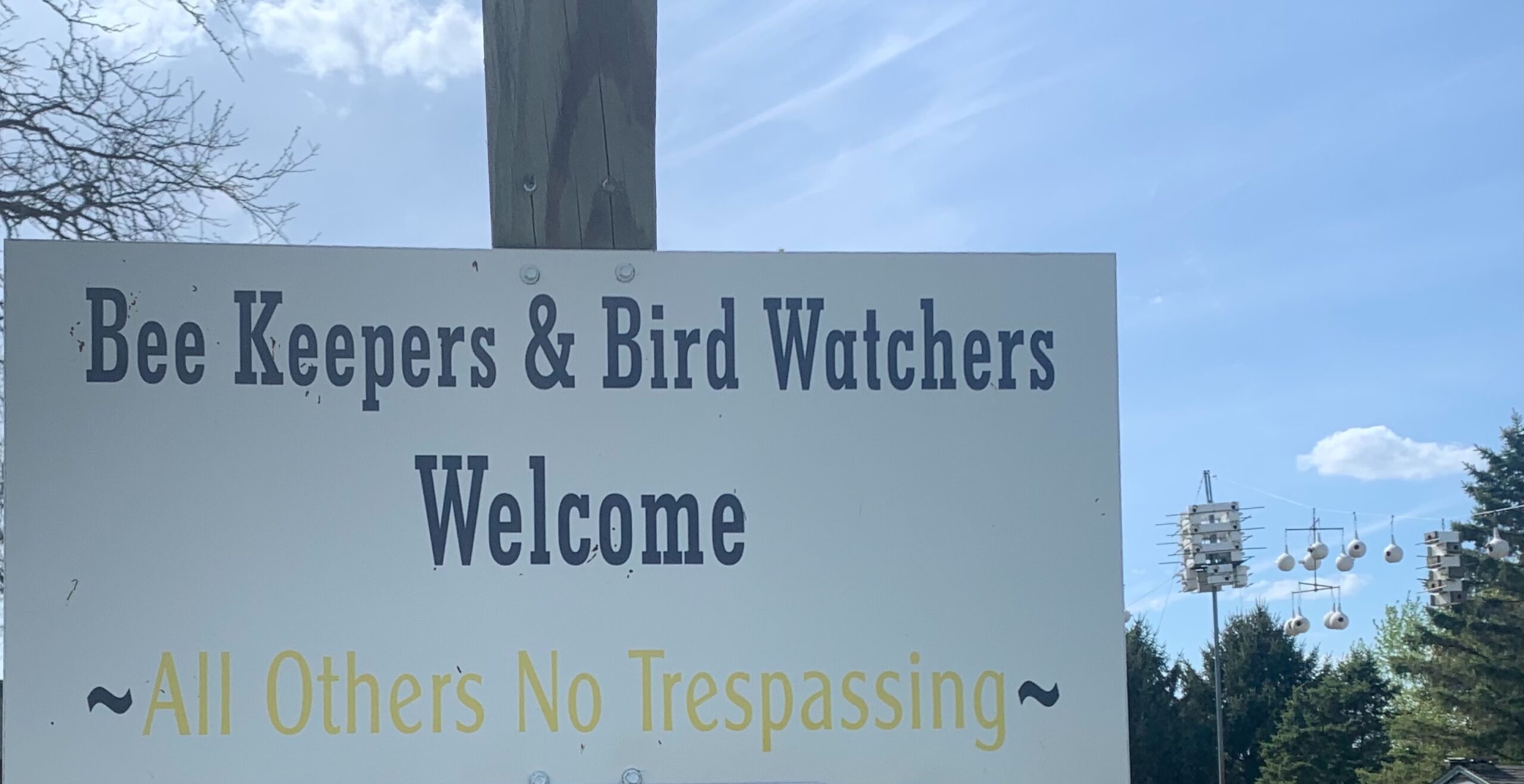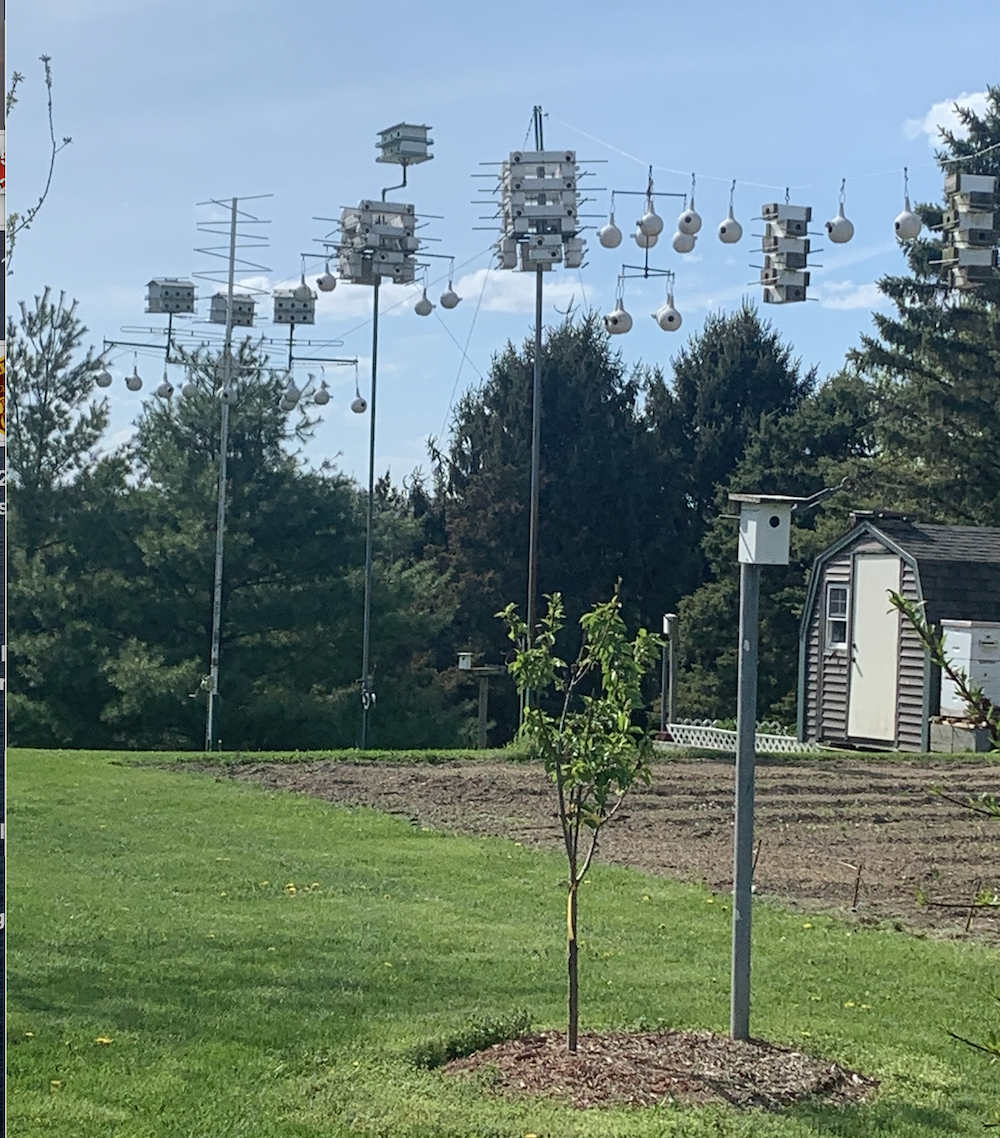Manchester couple welcomes back the purple martins with 126 nesting boxes

by Tracy Stengel, previously published in Newsbreak and reprinted with permission of the author
In our little town of Manchester resides a couple with huge hearts. They share their beautiful yard with a bunch of bats, birds, and bees. Their labor of love is not only good for the environment, but delights and inspires others to do the same, if only on a smaller scale.
This year, Don Hieber, Manchester’s local bird aficionado, put out 126 nesting boxes for purple martins. He is believed to have the largest colony of purple martins in lower Michigan. Since purple martins are dependent on humans to provide nesting sites, his efforts are crucial to their population.
Don’s handiwork attracts interest from the local Audubon Society and countless passersby. In the spring and summer months, cars pull over to watch the aerial action as the iridescent winged birds build nests, hunt for food, and tend to their hatchlings. Some people bring blankets and have a picnic with their children while watching the show.
Don and Nancy don’t mind respectful spectators. A sign in their driveway reads: Bee Keepers & Bird Watchers Welcome ~ All Others No Trespassing.
“It all started twenty-five years ago when my wife and I got married,” Don told me. “Nancy gave me a metal purple martin house.”
“Ah! And then you were hooked!” I said, nodding my head.
“Not really. We didn’t get one bird.”
I thought he was kidding.
He wasn’t.
Don did some research and made four nesting boxes and hung them underneath the original house – and the birds started coming – and that’s when he got hooked. So far, his best year was when he had 83 pair of nesting purple martins. One hot, rainy day in August, he counted 240 adult and baby purple martins lined up on the wire outside their homes, enjoying the shower.
Don isn’t sure why some years he gets more purple martins than others, but noted a lot can happen to a bird when migrating from Michigan to Brazil every winter. Storms and extreme weather patterns can make for a perilous journey.
When I asked Don if he thought the same individual birds come back to his yard every year, he didn’t hesitate. “I know they do. They return to where they were born.”
For years, birders were advised to have their purple martin houses out and up by April 15th. Don did that for a while, but in recent years, his houses went up April 1st. This year, Don spotted the first purple martin on April 9th.
Purple martins aren’t the Hieber’s only feathered friends. Nancy maintains several hummingbird and oriole feeders, and Don has at least 23 handmade bluebird houses sprinkled throughout their yard. “They all don’t have bluebirds,” he said. “There’s tree swallows in some of them.”
Since the tree swallows line their nests with feathers, Don and Nancy help them out. In the spring, they cut open down pillows collected from garage sales and scatter the feathers on the lawn. “This whole area will be white with feathers,” Don said, gesturing to a long swath of grass, “and the next day, there won’t be one feather on the ground.”
According to Don, purple martins eat 1.5 times their weight per day in bugs and insects. That’s a lot of mosquitos, right? Not so fast.
Don pointed out, “What time do the mosquitos come out? Dusk. What time do purple martins come in for the night? Dusk.”
Wait. What?
It seems the bats residing in Don’s handmade bat houses take care of the mosquitos. Yes, add bats to the list of winged creatures flying around the Hieber homestead. And did I mention Don and Nancy are beekeepers, too? But that’s another story – coming soon!








You must be logged in to post a comment Login